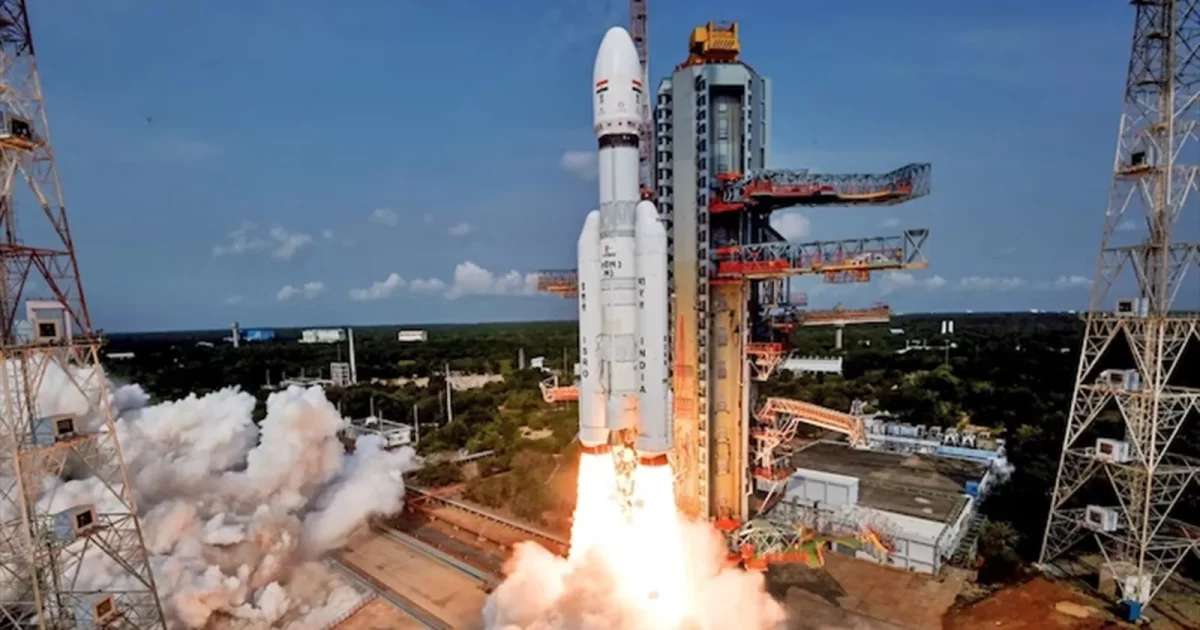
Following the mishap with Russia’s lunar lander, India’s aspirations for landing on the Moon have risen. The Indian Space Research Organisation (ISRO) has recently unveiled remarkable images captured by the Chandrayaan-3 spacecraft on its distant journey towards the Moon. This has marked an exciting development, especially on the lunar far side, near the Russian lunar lander’s mishap site. Chandrayaan-3 is a significant endeavor aimed at achieving a historic feat: landing on the lunar south pole, a region expected to hold valuable water ice resources for future lunar missions.
ISRO’s Chandrayaan-3, aptly named the ‘Moon Vehicle’ in Hindi and Sanskrit, is India’s second attempt to conquer the hidden southern lunar pole. In 2019, Chandrayaan-2 successfully placed an orbiter in lunar orbit, but its lander met an unfortunate end. Constructing numerous landing zones in the challenging terrain of the lunar south pole is a formidable task, making every landing attempt a formidable endeavor. Nevertheless, the potential rewards are immense, as the water ice in this region could be a vital resource for future lunar missions.
News of Russia’s Luna-25 mission’s setbacks has also emerged, with ISRO announcing that Chandrayaan-3 is on a steady path for its scheduled lunar landing on August 23. To ensure a safe touchdown, Chandrayaan-3 uses a Hazard Detection and Avoidance Camera system, which has been incorporated into its design. Identifying suitable landing sites in the lunar midlands is critical. In this mission, which began on July 14, the lunar module’s propulsion module detached successfully, allowing it to maneuver independently.
The success of this lunar endeavor not only enhances India’s space prowess but also strengthens its position in interplanetary exploration and satellite-based ventures. Prime Minister Narendra Modi’s vision for expanding space exploration and satellite-based missions will receive a boost if Chandrayaan-3 succeeds. According to former ISRO scientist Manish Purohit, “If Chandrayaan-3 succeeds, it will elevate India’s space agency on the global stage as a significant player in interplanetary research.”
India’s successful lunar mission will open doors for further breakthroughs in interplanetary engineering. Chandrayaan-3’s launch, with an estimated cost of around 6.15 billion rupees (approximately $74 million), is comparatively modest when compared to the budget of Hollywood space thriller ‘Gravity’ produced in 2013. A triumphant landing will earn India a spot in an exclusive club, joining former lunar achievers like the United States and China.
ISRO scientists have relentlessly worked to rectify past lunar mission shortcomings, making significant improvements for future lunar endeavors. Enhanced landing capabilities, increased propulsion power, additional solar panels, and robust landing gear are all part of these mission enhancements, increasing the likelihood of mission success.
Chandrayaan-3’s success will not only benefit India’s growing space industry but also the global community. Since India initiated its lunar launch program in 2020, there has been a surge in space startups. Skyroot co-founder Pawan Chandana, who launched India’s first privately built rocket last year, has expressed enthusiasm, stating, “Less than three days to go, and we can’t keep calm! The excitement to witness the landing is overwhelming!”
As India’s Chandrayaan-3 approaches its crucial lunar landing near the importance lunar south pole, the world watches with great anticipation, recognizing that India’s achievements in space exploration and technology are poised for transformation.”



